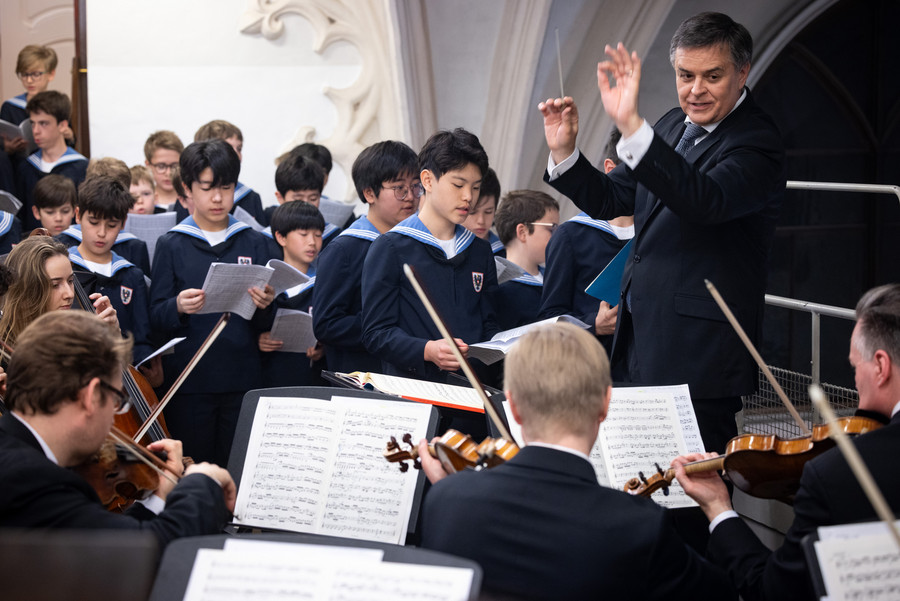Franz Schubert (1797-1828): Mass in E-flat Major, D950
Franz Schubert wrote his Mass in E flat major in the last months of his life. He received the commission in the spring of 1828 and completed it in the summer of the same year, just a few months before his all too early death on 19 November 1828. Working on this mass brought the composer back to his biographical and artistic roots: the mass was intended for the association for the cultivation of church music in the Alsergrund parish. Schubert was not only born in this very neighbourhood of Vienna, but also took his first steps as a composer and musician here. As a pupil and choirboy, he learnt about the church music of his time in the Lichtental parish church, where his family was intensively involved in music and which was located in the immediate vicinity of his birthplace. Here he received his first lessons in violin playing and composition, first from his father and later from the Lichtentaler Regens Chori Michael Holzer. At the age of 11, he became a choirboy in the Imperial and Royal Court Music Ensemble, where he also received lessons from court conductor Antonio Salieri, among others. In the first two decades of his life, Schubert wrote four of his six masses and a large number of his church music works in small form. A focus that was not to continue in this intensity in the following years.
Schubert did not get to hear a performance of the Mass in E flat major, which, compared to his four early masses, is characterised above all by its large form and instrumentation. His brother Ferdinand Schubert in particular made an effort to have this mass performed soon after Franz Schubert's death, and it was premiered under his direction on 4 October 1829 in the parish church ‘Wien-Alservorstadt’. Although a handful of further performances followed, the mass did not find its way into the church music repertoire for the time being.
It was only in the 1860s that interest in the mass began to increase again, also thanks to the efforts of important names such as Brahms, Schumann and Herbeck. Particularly important was the first printing of the mass in 1865/66 by the publisher J. Rieter-Biedermann in Leipzig, for which none other than Johannes Brahms prepared the piano reduction. Now the mass also found its way into the repertoire of the Court Music Ensemble, in which Schubert's works had previously hardly played a role. The Mass in E flat major was performed for the first time on 12 August 1866 in the Imperial Court Chapel under the direction of the then newly appointed Hofkapellmeister Herbeck. From then on, the mass became a permanent fixture in the Court Music Ensemble's repertoire, albeit as a speciality for major festive occasions, predominantly at Easter and Whitsun.
Shortly after its publication, the mass was also performed in concerts in Cologne, Berlin and Leipzig and, although intended for liturgical use, it now also occupies a permanent place in the concert repertoire.
Schubert's Mass in E flat major is notable for its large form and orchestration. Particular attention is paid to the text-rich mass sections Gloria and Credo and the breadth of the text is skilfully interpreted musically. Karl Pfannhauser summarises the character of the mass with the following words: 'Melodic sonority and deep earnestness, harmonic richness, brilliant development and romantic prominence of the wind instruments characterise the work as an unmistakable child of Schubert's muse.
Written by: Sebastian Bürger, MA
Translation: Godwin Gundacker
Conductor: Martin Schebesta
Organist: Jeremy Joseph
Choir: Vienna Boys Choir, Vienna State Opera men's choir, "Choralschola der Wiener Hofburgkapelle"
Orchestra: Members of the Vienna State Opera Orchestra
Celebrant: Peter Schipka
Duration: approx. 90 min (09:15-10:45)
Ticket reservation at office@hofmusikkapelle.gv.at
Online ticket sale through Culturall:


